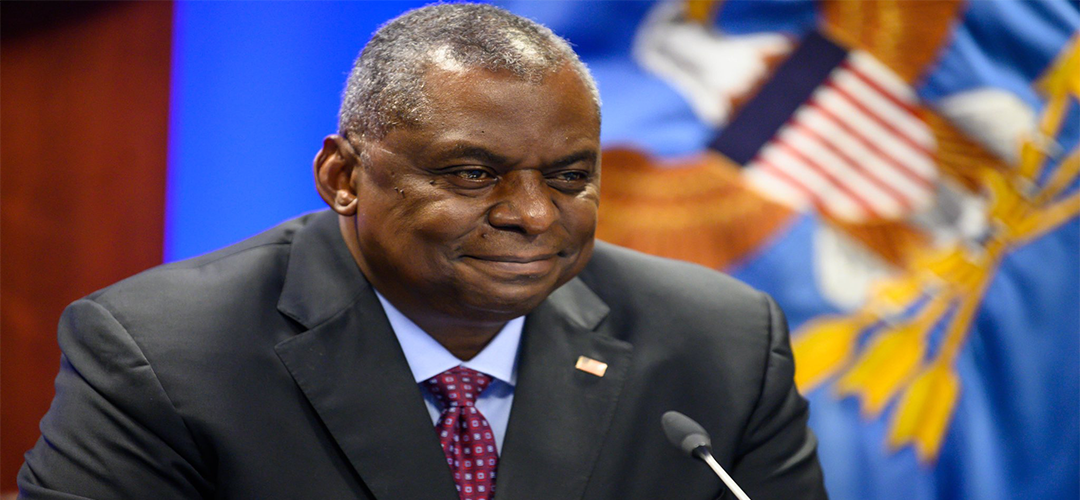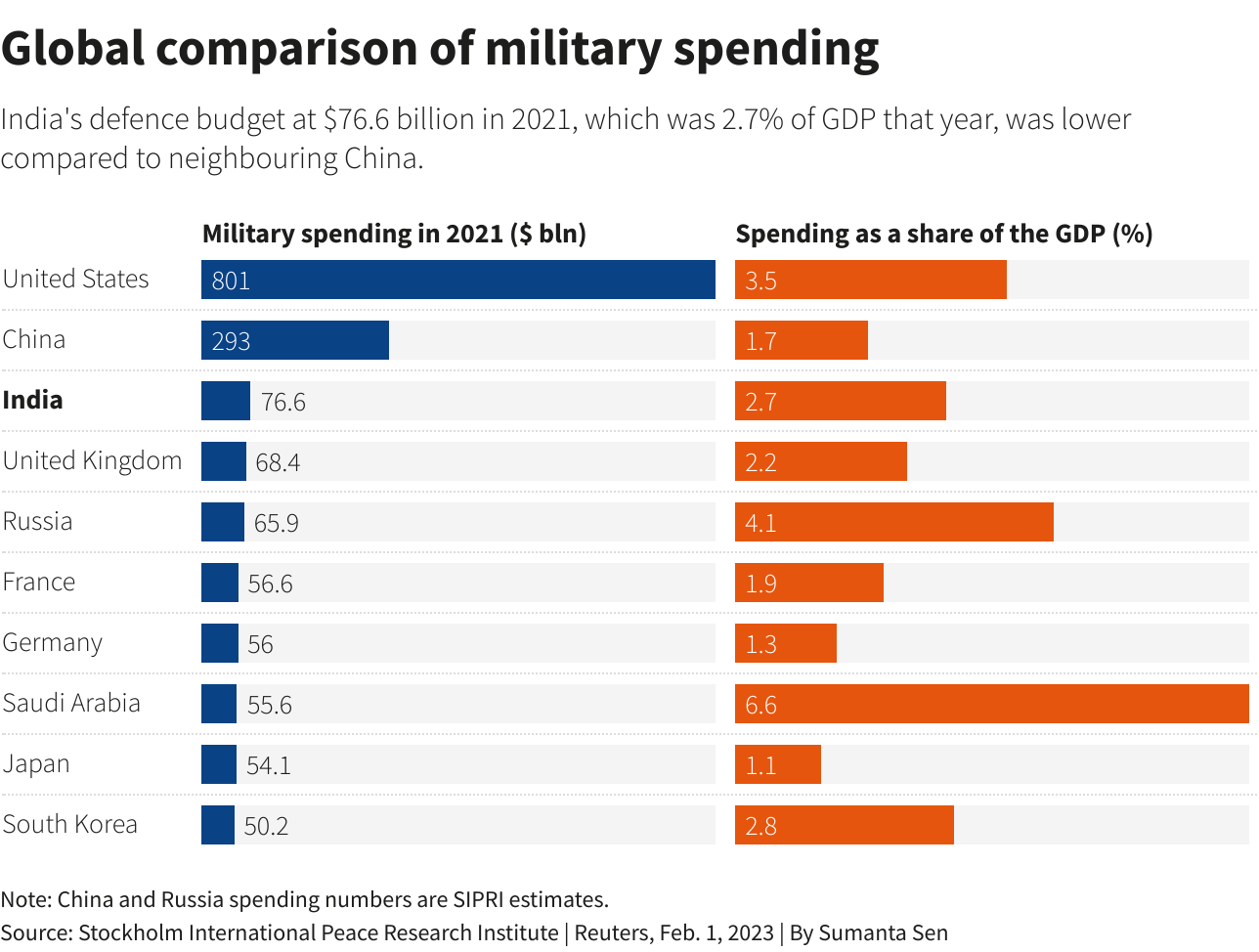Indo-US Security Relationship
June 17, 2023 | Expert Insights

As Chinese power expanded in the Indo -Pacific, an alarmed U.S. has been seeking like-minded strategic partners in the region. India, the most populous democracy, was an ideal candidate once it had grown over its obsession with non-alignment.
For India, too, it was a natural step forward. Its wider maritime neighbourhood is the place where future military competition is likely to occur between the great powers.
On the eve of the visit of Prime Minister Modi to the U.S. on June 22nd, it was significant that the U.S. Defence Secretary visited New Delhi to lay down the groundwork for the deals expected to be struck during Mr Modi's Washington sojourn. That the Defence Secretary was acting as the pointsman for the visit is indicative of the orientation of India's burgeoning relations with the U.S., even when nearly 60 per cent of India's military imports are from Russia.
Background
The defence policy of India worked quite well over the years in meeting the country’s security needs in the early years post-independence. Yet there was one major drawback. While India inherited a vast network of ordnance factories from the British, these produced mostly non-warlike material for the armed forces and ammunition. India did not have the economic flexibility to invest vast amounts in weapons R&D and was thus compelled to procure its weapons requirement (less small arms) from the cheapest and geopolitically accessible sources. Not surprisingly, the weapons procured/ assembled were never state-of-the-art. The backbone of the indigenous defence industry was collaboration and co-production with the Soviet Union. Expectantly, with the collapse of the USSR, India had no option but to look at expensive Western options or reinvigorate its own moribund public sector-run defence industry.
Aspiring to become a regional/global power, India is sensitive to the fact that hard power cannot be sustained on imported/ borrowed military technology and hence the current drive towards a strong indigenous arms industry. This is underscored by a deteriorating geopolitical situation in India's periphery, with China flexing muscles and a recalcitrant Pakistan continuing with its policy of death by a thousand cuts.
Since early 2000, the U.S. has been wooing India with an eye on its exploding needs for state-of-the-art weapon systems, which were being grabbed by its European partners like France, the U.K. and even Germany. However, the U.S. is fast catching up from 2008 (when American military exports to India were almost negligible) to 2020, when they had jumped up to $ 20 billion with a list that included long-range maritime patrol aircraft, C-130 transport aircraft, missiles, and drones.
In its press handout, the U.S. Embassy in India was very enthusiastic about the scope of the U.S. -India military technology cooperation. As per the press handout, the new road map for U.S.-India defence industrial cooperation will fast-track technology cooperation and co-production in areas such as air combat and land mobility systems, intelligence, surveillance, reconnaissance, munitions, and the undersea domain. “This initiative aims to change the paradigm for cooperation between U.S. and Indian defence sectors, including a set of specific proposals that could provide India access to cutting-edge technologies and support India’s defence modernization plans,” it said.

Analysis
Keeping this background in mind, it is not difficult to understand the context of the U.S. Defence Secretary's visit. The Russia-Ukraine war shows no signs of ending. This war has brought together Russia and China into a close security alliance. On the other hand, border tensions between India and China have risen. The old Cold War assumptions have been jettisoned. Russia is no longer the reliable military partner it once was. As the junior ally of China, it has no choice now. It is following its own self-interest. In such a situation, it would be imprudent for India not to rethink its decades-long security policy. Sentimentality should not come into the picture. Decision-making has to be guided by pure realpolitik.
India has much to learn from the United States in terms of defence modernization. If there is institutional compatibility between the Indian and American defence sectors, then it will benefit both countries. Military cooperation will become that much easier.
Then there is the technical aspect. The U.S. has always been the leader with respect to the technological side of warfare. American security ideology is based on the idea that quality is the key determinant of victory in war, not quantity. America is willing to share this technology with India to underpin their strategic partnership, as was underscored by the U.S.-India initiative on Critical and Emerging Technology (iCET) signed in May 2022 to elevate and expand their strategic technology partnership.
That the technology partnership is being elevated to the next level is clear from the list of subjects up for discussion. This includes cyber warfare and A.I. along with conventional systems like 18 x HALE UAVs in a mega deal worth almost $ 2 billion. Even more exciting are plans for joint production of combat aircraft engines (a long-standing failure of the Indian defence industry), modern armoured combat vehicles, howitzers, smart ammunition etc.
Today cyber warfare is just as important as its kinetic counterpart. Pivotal systems like electricity grids which give life support to a whole economic system, could be destroyed by cyber-attacks. As the Indian economy becomes more connected to the online world, it will be more prone to cyber-attacks. A global arms race is starting in artificial intelligence. Weapon systems are slowly becoming automated. The uncertainty surrounding the human factor is being removed. India cannot lose out in this race. So, it is getting into the game.
Intelligence cooperation has also been on the agenda in the recent talks. The U.S. has an overarching intelligence capability to back up its military. Acquisition of these capabilities will give India an edge over its rivals.
India is interested in the jet engine manufactured by the U.S. company General Electric. The Biden administration has supposedly given its approval for this. However, a hurdle remains. This is approval from the U.S. Congress. It is expected that when Prime Minister Modi comes to Washington, the jet engine deal will reach an advanced stage.
Assessment
- A major focus of this visit by Secretary Austin has been on the co-development and co-production of new weapons technologies between India and America. But this cannot be only a government-to-government initiative. The private sector of both countries has to come into play. Academia also needs to be involved. The scope and possibility of Indo-US military cooperation are endless.
- India does not have to copy-paste the American defence model. It just has to pick up the portions that best suit it. Indian policymakers have to be completely familiar with the U.S. defence procurement system. Israeli defence firms lobby in the U.S. Congress. There is no reason why Indian defence companies cannot do the same
- It will not be immediately possible for India to totally wean itself away from dependence on Russian military hardware. It will take quite a long time before a modern, self-reliant indigenous defence sector emerges in India in a comprehensive manner.








Comments